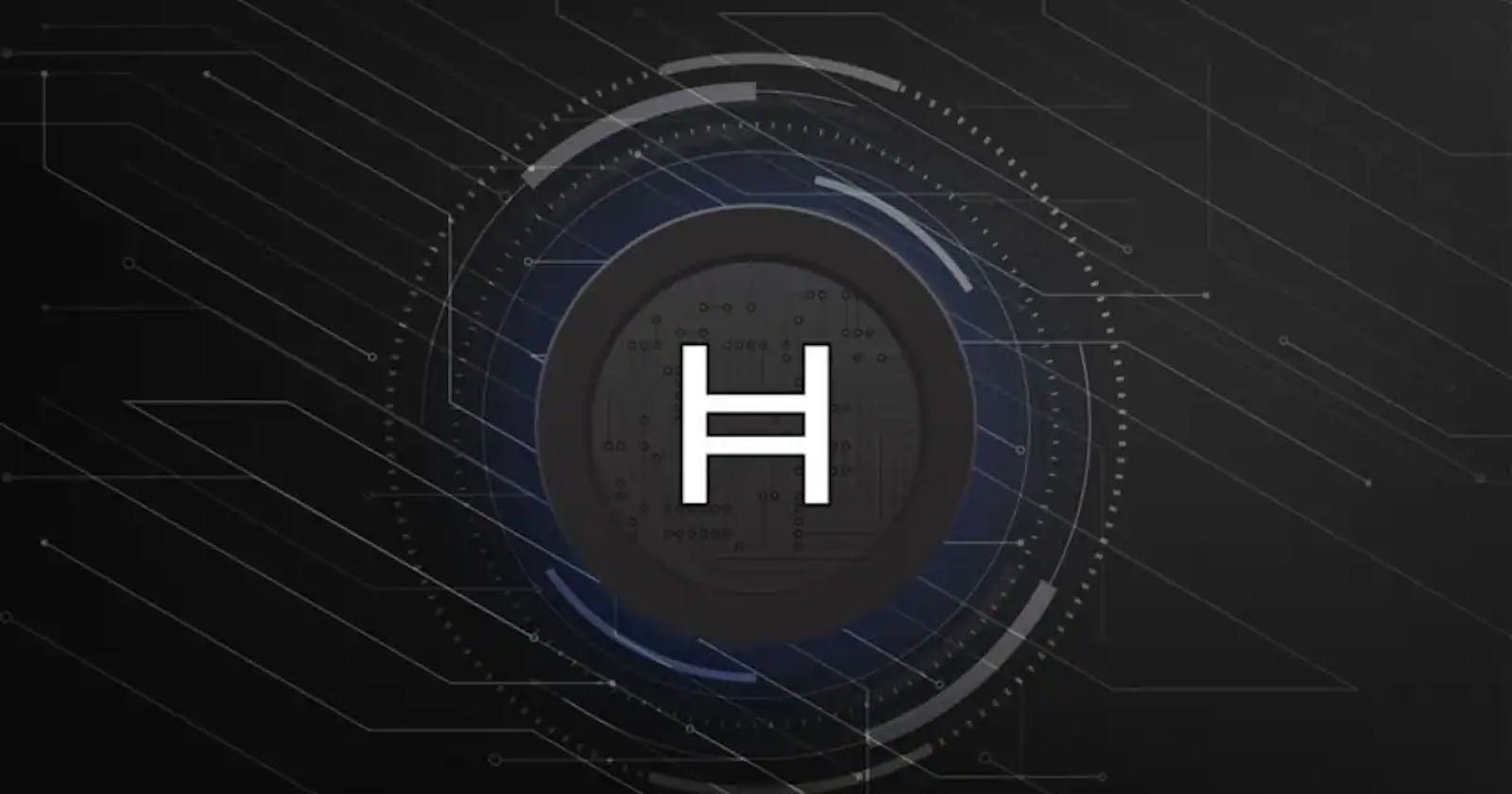Hedera Hashgraph: The journey begins
Unraveling the Revolutionary Potential of Hedera Hashgraph
In the ever-evolving landscape of blockchain and distributed ledger technologies, Hedera Hashgraph has emerged as a powerful and innovative platform. To understand what Hedera Hashgraph is, it's crucial to break down its name into two fundamental components: "Hedera" and "Hashgraph."
What is Hedera and Hashgraph?

Hedera: The Foundation of Trust
The term "Hedera" in Hedera Hashgraph refers to the organization behind the platform, Hedera Hashgraph LLC. Founded in 2017, this organization sought to develop a new generation of distributed ledger technology that overcomes some of the limitations of existing blockchain systems. Hedera's primary goal is to provide a secure, fair, and efficient platform for decentralized applications (dApps), smart contracts, and the secure transfer of digital assets.
Hedera is unique in its approach to governance. The network is overseen by the Hedera Governing Council, a consortium of leading global organizations. This council includes companies like Google, IBM, Boeing, LG, and others, each serving as a council member. The council's role is to ensure that the network remains decentralized, stable, and secure, making decisions regarding network policies, codebase changes, and strategic direction. This approach sets Hedera apart from many other blockchain platforms, as it seeks to prevent any single entity from having undue influence or control over the network.
Hashgraph: The Innovative Consensus Mechanism
Now, let's explore the "Hashgraph" aspect of Hedera Hashgraph. Hashgraph is the underlying consensus mechanism that powers the Hedera network. Unlike traditional blockchains, which rely on Proof of Work (PoW) or Proof of Stake (PoS) consensus algorithms, Hashgraph employs a unique consensus algorithm known as Asynchronous Byzantine Fault Tolerance (ABFT).
ABFT is designed to offer several advantages:
Speed: Hashgraph is exceptionally fast, capable of processing thousands of transactions per second (TPS). This speed is crucial for real-time applications like payment processing, gaming, and supply chain tracking.
Security: ABFT ensures that transactions are secure and tamper-proof. It prevents double-spending and unauthorized alterations to the ledger, making it suitable for a wide range of applications.
Efficiency: Unlike PoW-based blockchains, Hashgraph is energy-efficient. It doesn't require the massive computational power associated with mining, making it more environmentally friendly.
Fairness: Hashgraph promotes fairness in the consensus process. It allows all nodes to take turns proposing and voting on transactions, ensuring that no single node or group of nodes can dominate the network.
Gossip about Gossip

In the realm of distributed networks, the term "gossip" might evoke images of hushed conversations and secretive exchanges. However, in the context of computer science and distributed systems, the "Gossip Protocol" is anything but clandestine. It's a fundamental mechanism that enables nodes within a network to efficiently share information, helping to ensure the integrity, consistency, and synchronization of data across a distributed system.
What is the Gossip Protocol?
The Gossip Protocol is a communication protocol used by nodes within a decentralized network to exchange information in a decentralized and peer-to-peer manner. It's aptly named because it resembles the way rumors or gossip spread among people in a social network. Instead of relying on a centralized authority to disseminate information, nodes in a distributed network "gossip" with one another, sharing data, updates, and changes.
How the Gossip Protocol Works:
The Gossip Protocol operates on a simple yet effective premise:
Random Selection: In a network, each node periodically selects a random peer to communicate with. This selection can be truly random or based on certain criteria, such as proximity or relevance to the information being shared.
Information Exchange: The selected nodes exchange information, which can include updates, transactions, or data changes. Nodes may also share information they have received from other nodes in previous interactions.
Propagation: As nodes continue to gossip with other nodes, information spreads throughout the network. This process continues until most or all nodes in the network are aware of the information.
Redundancy: The Gossip Protocol often includes redundancy to ensure that information is consistently shared across the network. Nodes may engage in multiple gossip rounds to guarantee that data reaches all peers.
Virtual Voting

Virtual voting is at the core of the Hashgraph consensus algorithm used in Hedera Hashgraph. It's a method that achieves fairness, security, and practicality in reaching consensus without the need to send votes across the network. Instead, each member calculates votes locally, making it efficient even in networks of significant size. This virtual voting process unfolds in three crucial steps: Divide Rounds, Decide Fame, and Find Order.
1. Divide Rounds:
The first step in the virtual voting process is the division of rounds. In the context of Hashgraph, a round represents a specific period during which transactions and events occur. These rounds help organize the order of events in the Hashgraph ledger.
During the Divide Rounds phase:
The network divides time into discrete rounds, each with its own unique identifier.
Events, which are transactions or actions, are assigned to these rounds based on their timestamps.
This division ensures that events are organized in chronological order, allowing nodes to establish a coherent and linear history of events.
2. Decide Fame:
The second step, Decide Fame, is a pivotal aspect of Hashgraph's virtual voting process:
In this phase, each member of the network evaluates the popularity or fame of events within a round.
Fame is determined by analyzing how many other events reference a particular event as a parent or ancestor.
Events with a significant number of references are deemed "famous" and are considered for further processing in the consensus algorithm.
Decide Fame is an essential step in Hashgraph because it helps narrow down the events that should be considered for consensus. Famous events have a higher likelihood of being included in the final order of events, as they represent a strong consensus among network participants.
3. Find Order:
The third and final step, Find Order, is where the network establishes the precise order of events within a round:
Once the famous events for a given round are identified, nodes can proceed to determine the exact order in which these events occurred.
Hashgraph employs a voting mechanism that enables nodes to virtually vote on the relative order of famous events.
Each node calculates these virtual votes based on their local view of the Hashgraph, considering the ancestors of each event.
As the virtual votes are tallied, a consensus emerges, and nodes reach an agreement on the order of events within the round.
Find Order ensures that the Hashgraph ledger maintains a consistent and accurate sequence of events, allowing for reliable transaction ordering, timestamping, and consensus.
Benefits of Virtual Voting:
Virtual voting in Hedera Hashgraph offers several benefits:
Bandwidth Efficiency: Since no actual votes need to be transmitted across the network, virtual voting significantly reduces the bandwidth requirements, making it practical for networks of any size.
Fairness and Security: The virtual voting algorithm maintains fairness and security properties, ensuring that honest participants can trust the outcome of the consensus process.
Resilience to Attacks: Even in the presence of malicious actors (Byzantine faults), virtual voting remains robust, as it relies on participants' individual assessments based on local data.
In conclusion, virtual voting is the cornerstone of the Hashgraph consensus algorithm used in Hedera Hashgraph. It enables the network to achieve fairness and security while remaining practical and efficient, even in large networks. The three key steps—Divide Rounds, Decide Fame, and Find Order—combine to create a powerful mechanism for reaching consensus, facilitating the creation of a transparent and reliable ledger for various decentralized applications and use cases.
Hedera Network Services

The Hedera network services are a suite of application programming interfaces (APIs) designed to offer developers a seamless and convenient means of interacting with the Hedera network. These APIs empower developers to harness the full potential of Hedera's capabilities, allowing them to create accounts, mint tokens, record data on the ledger, and engage with smart contracts, among other functionalities.
Predictable Transaction Fees: Every API call within the Hedera network services ecosystem is accompanied by a predictable transaction fee. This fee is determined based on the computational processing and storage resources required for the requested action. This predictability enables developers to plan and allocate resources efficiently for their applications.
Accessible Across Multiple Languages: To cater to the diverse preferences of developers, Hedera offers a range of Software Development Kits (SDKs) that make it exceptionally easy to access the APIs. These SDKs are available in popular programming languages such as JavaScript, Java, and Go, ensuring that developers can work with their preferred language and tools.
Within the Hedera network services, there are three core components that provide distinct functionalities:
1. Hedera Token Service (HTS):
HTS serves as a comprehensive solution for token management, configuration, and transfer on the Hedera network. It simplifies the process of working with tokenization on Hedera, offering a flexible and user-friendly experience.
Key features of HTS include high-throughput capabilities, low transaction fees, and configurable compliance settings. It also supports on-chain programmability, allowing developers to perform actions like atomic swaps and manage royalties through API calls.
2. Hedera Consensus Service (HCS):
HCS is a robust consensus-as-a-service platform built upon the Hedera network infrastructure. It serves as a valuable tool for creating decentralized and auditable logs of immutable and timestamped events.
HCS leverages the Hashgraph consensus algorithm, combining the trust and transparency of Hedera's public network with the privacy features of permissioned blockchain frameworks. This unique blend enables the creation of verifiable timestamps, decentralized ordering, and privacy protection for sensitive data.
3. Hedera Smart Contract Service (HSCS):
HSCS introduces Ethereum Virtual Machine (EVM) compatibility to the Hedera ecosystem, allowing developers to build smart contracts using the Solidity programming language.
Smart contracts on Hedera are optimized for Hashgraph's efficiency, ensuring rapid execution with finality in seconds. Additionally, they contribute to a carbon-negative environmental footprint and maintain predictably low gas fees.
Notably, HSCS prioritizes the order of smart contract calls based on the sequence of reception, rather than the amount of gas paid. Furthermore, it seamlessly integrates with the Hedera Token Service (HTS), enabling automated token management within smart contracts.
In summary, the Hedera network services offer developers a powerful toolkit to engage with the Hedera network effectively. Whether it's tokenization, event logging, or smart contract deployment, these services provide the necessary building blocks to create a wide range of decentralized applications and solutions, all while maintaining transparency, security, and efficiency. Developers across various domains can leverage these services to unlock innovative possibilities on the Hedera platform.

